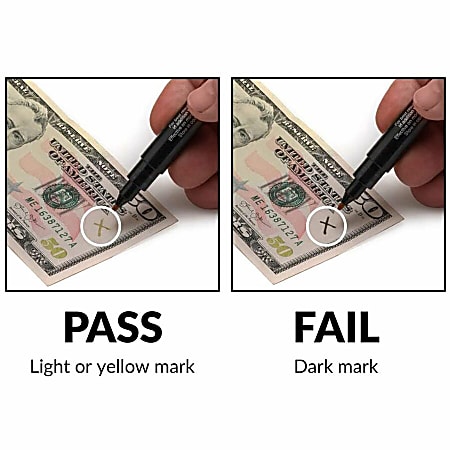Safeguard Purchases: Buy Funny Money to buy Securely
Explore making uses of Funny Money in Artistic Creations and Theatrical Performances
Funny money, often associated with deceptiveness and illegality, holds a strange allure when it finds its means into the realm of artistic productions and staged performances. Its background is stuffed with intricate narratives that have actually motivated artists to include these replicas right into their works. From the aesthetic arts to the remarkable stage, copyright money has been utilized in fascinating manner ins which test understandings and prompt idea. As we explore the multifaceted usages of funny money in these innovative domain names, we begin to discover a globe where credibility and imitation blur, triggering us to examine the very nature of value and representation within art and efficiency.

Historic Significance of Funny Money in Art
The historic significance of funny money in art is a complex and interesting topic that drops light on the crossway of imagination, subversion, and socio-political commentary. Throughout background, artists have actually used copyright money as a device for challenging social standards, examining the value of money, and making effective declarations regarding wealth and power.
One of the most remarkable instances of funny money in art go back to the Dada motion of the early 20th century - copyright money for sale. Artists such as Marcel Duchamp and Hannah Höch included copyright right into their jobs to criticize the capitalist system and discover the idea of value in a rapidly altering world
In addition, during times of economic instability or political turmoil, copyright has been made use of by artists as a type of protest or disobedience. By creating and distributing copyright, artists have actually had the ability to disrupt the condition quo, difficulty authority, and prompt essential discussions about the role of cash in society.
Influence of copyright Money on Visual Arts
By incorporating phony cash right into their jobs, artists prompt conversations on the nature of worth, credibility, and social understandings of wealth. The usage of copyright in art additionally increases moral considerations regarding the borders of imaginative expression and the ramifications of replicating legal tender. Overall, the influence of copyright currency on aesthetic arts is diverse, promoting vital reflections on the junction of money, art, and social values.
Symbolism and Meaning in Theatrical Imitation Displays
Making use of staged imitation display screens, artists employ symbolic depictions to share much deeper meanings and evoke provocative interpretations within the world of efficiency art. Through the unification of funny money in theatrical productions, makers can explore styles such as greed, power, corruption, and the impression of wide range. Using copyright on stage can function as an allegory for social problems, economic variations, and the frailty of economic systems.
In theatrical efficiencies, the symbolic value of copyright expands past its monetary well worth. It can signify the misleading nature of appearances, the pursuit of materialistic needs, and the repercussions of underhanded habits. By making use of phony money as a prop, artists can test target markets to question the true meaning of wealth and the honest limits that people may go across in its pursuit.
Honest Factors To Consider in operation copyright Money for Art

One major moral consideration is the possible legal consequences of using funny money in Learn More Here art. Counterfeiting currency is prohibited in the majority of nations and can lead to serious repercussions for artists who intentionally incorporate fake costs right into their work. copyright money for sale. This not only places the musician at risk but additionally questions concerning advertising prohibited tasks through art
In addition, there is a moral issue pertaining to the authenticity of the artwork itself. Making use of copyright blurs the line between fact and replica, potentially tricking visitors and endangering the honesty of the artistic item. Artists must think about whether the usage of copyright lines up with their worths and imaginative objectives, considering the possible impact on their credibility and trustworthiness.
Future Fads in Imitation Cash Assimilation
Considering the progressing landscape of artistic expression, the unification of funny money in imaginative works might witness a shift towards cutting-edge and provocative avenues. As musicians remain to press boundaries and discover brand-new tools, funny money could increasingly be made use of to challenge societal standards, question the value of money, or make powerful statements about wide range and consumerism.
One future fad in phony money assimilation can be its usage find out here now in immersive art setups where target markets are motivated to engage with the pieces, blurring the lines in between truth and impression. Furthermore, improvements in modern technology might cause the creation of hyper-realistic phony money that is virtually equivalent from genuine money, opening up opportunities for even linked here more in-depth and intricate artworks.
In addition, partnerships in between artists and counterfeiters might cause one-of-a-kind pieces that incorporate conventional imaginative strategies with the craftsmanship of developing phony money. Honest considerations bordering the legality and principles of making use of phony cash in art will proceed to be a factor of opinion as these future patterns unravel.
Verdict
In conclusion, the usages of fake cash in theatrical performances and artistic productions have a lengthy history and proceed to be a source of inspiration for musicians. The combination of copyright money in art is most likely to continue advancing in the future.
Generally, the effect of copyright money on visual arts is multifaceted, boosting important reflections on the intersection of cash, art, and societal worths.

In final thought, the uses of fake cash in theatrical efficiencies and imaginative creations have a long history and proceed to be a resource of inspiration for musicians. Moral factors to consider must be taken into account when making use of phony money for innovative objectives. The assimilation of copyright money in art is likely to continue progressing in the future.